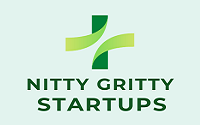Starting a small business brings many challenges. One of the biggest is hiring the right people. You’re not just looking for workers; you want a team that shares your vision and goals. Yet, finding these people can be tough, especially when you’re competing with big companies that have more to offer. But don’t worry. Small businesses have their own strengths to attract great people. In this guide, we’ll show you 15 top hiring strategies that are perfect for small businesses. These will help you find the right people who are excited to grow with your company. Let’s get your team built with the best talent out there.
Before diving into the world of hiring strategies, a quick word about the author. You will find information on the author and his qualifications on Authors‘ page. Information in this article is for general informational and educational purposes only. It should not be considered as professional financial advice. Nitty Gritty Startups and the author are not licensed financial advisors. Please read our full Legal Disclaimer and Financial Advice Disclaimer.
Key Takeaways and Action Points

Here is a table summarizing key takeaways and action points from this article. If you do not have time to read the whole article, these Key Takeaways and Action Points give you a good general summary of the content.
| No. | Key Takeaways | Action Points |
|---|---|---|
| 1 | Develop Clear Hiring Goals | Define specific roles and skills needed. |
| 2 | Plan your hiring process | Prepare a formal plan for the steps and processes that you will follow when finding new people. |
| 3 | Build a Strong Employer Brand | Focus on employer branding to attract candidates. |
| 4 | Leverage Social Media | Use platforms like LinkedIn for talent acquisition. |
| 5 | Create Compelling Job Descriptions | Write clear and engaging job postings. |
| 6 | Utilize Employee Referrals | Encourage current employees to refer quality candidates. |
| 7 | Implement Efficient Screening Processes | Streamline the interview process for efficiency. |
| 8 | Focus on Candidate Experience | Ensure a positive candidate experience throughout. |
| 9 | Use Recruiting Software | Employ tools for effective recruitment and tracking. |
| 10 | Prioritize Diversity and Inclusion | Build a diverse and inclusive workplace culture. |
| 11 | Offer Competitive Compensation | Research and provide attractive compensation and benefits. |
| 12 | Onboard Effectively | Have a structured onboarding program for new hires. |
| 13 | Continuously Evaluate and Adapt | Regularly assess and improve your hiring strategies. |
This table encapsulates the essential strategies and actions that can help small businesses in recruiting and hiring top talent effectively. By focusing on these key points, business owners can build a strong, cohesive team that contributes significantly to the growth and success of their business.
Audio File
If you would prefer to listen to the content of this article, please click on the link below. You can also download the file for offline listening.
Table of Contents
Introduction to Recruiting Top Talent

Finding top talent is key for small businesses. It helps them grow and succeed. But, hiring can be tough. We’ll use simple, effective strategies. These are proven to work for startups and small businesses. Let’s dive in!
The Importance of Good Recruitment
Good recruitment strategies are a must. They help you find the right people for your team. This means looking for skills and a good fit. A great team can take your business to new heights. It’s about hiring the right candidates who share your vision. They should help you grow your business.
Using Social Media and Other Tools
Social media is a powerful tool. It can help you find new talent. It lets you reach job seekers where they are. Also, tools like applicant tracking systems make the process easier. They help you manage job posts and applicants. This way, you find the best candidates faster.
Creating a Winning Job Post
Your job post is your first impression. It should be clear and appealing. Talk about your company culture and the role. This attracts the right people. Make sure it stands out. Use it to show why your business is a great place to work.
Engaging Current Employees in the Process
Your team can be your best recruiters. They know your business and what it takes to succeed. Encourage them to share job openings. They might know the perfect person for the job.
Why Strong Hiring Strategies Matter for Small Businesses

Good employees help a business grow strong. They work hard, come up with new ideas, and make customers happy. But finding these people isn’t easy. You’re up against big companies that can offer more money and perks. Also, hiring the wrong person can cost you a lot. They might not work well, or they could leave quickly, making you start all over again. That’s why you need smart hiring strategies—to find people who do great work and fit in with your team.
The right plan helps you find people who are a great match for your business.
The Impact of Good Hires on Growth and Success
Hiring the right people can make your business much better. They bring good ideas and can make your customers happy. If they stay with your business for a long time, you don’t have to keep looking for new people. This saves you time and money. They can also inspire your team. This makes your business stronger. Good hires can help your business do things better and make more money.
Challenges of Attracting Talent in a Competitive Market
It’s tough to find great people to hire. There are lots of businesses looking for the same talent. Bigger companies can offer more than small businesses, like higher pay or cool benefits. That means small businesses must work extra hard to show why they’re a great place to work. This means having a good story about your business and what makes it special.
Cost of Bad Hires and Importance of Finding the Right Fit
Hiring the wrong person can be expensive. They might not work well, which can waste time and money. If they leave soon, you have to spend on hiring all over again. That’s why it’s important to find someone who fits with your business from the start. They should share your values and be excited about your goals. This way, they’ll likely stay longer, do a good job and help your business succeed.
Develop a Recruitment Plan for Effective Recruitment Strategies

For small businesses, planning how to hire is key. A good plan helps you know what kind of person you need. It also shows you the steps to find and get these people to join your team. Start by thinking about the job you need to fill. What skills should the person have? Where might you find people who are good for this job? Having a plan in place makes sure you don’t miss any important steps in hiring.
Provide Training for Your Team
To hire great employees, train your hiring team. They need to know your recruitment goals. This helps them find the best talent. They should understand your business values. This ensures they hire someone who’s a good fit. When your team knows how to hire, it can make finding new people much easier and faster.
Establish Clear Processes and Procedures
Having clear processes is key. This makes your recruitment efforts effective. It helps your team know what to do at each step. This includes how you’re hiring and onboarding new employees. It makes hiring fair and the same for every job. This way, everyone knows what to expect and how things work.
Map Out Your Preferred Recruitment Channels
Decide where to look for candidates. This could be online job boards, social media, or campus recruiting. Each channel can help you find different types of talent. Choose the ones that match your needs. This helps you find people faster.
Set Out the Interview Process
Have a plan for how you do interviews. Who will talk to the candidates? What will you ask them? Make sure you ask questions that help you learn if the person is right for the job. This is one of the best ways to ensure successful recruitment. It lets you really understand the candidates.
Building Your Employer Brand

Having a good employer brand means people will want to work for you. It’s like your business’s story. It tells people what it’s like to be part of your team. If you have a strong employer brand, people will be more excited to apply for your jobs.
Why Employer Brand Matters for Attracting Top Candidates
A strong employer brand is essential. It tells potential candidates what your business is like. A good brand makes people want to work for you. It’s more than a paycheck. It’s about being part of something great. For small businesses, this can mean a lot. It helps you stand out in a crowded market. If candidates hear good things about your business, they will want to work for you.
Defining Your Company Culture and Values
Your culture and values are the heart of your business. They guide how you work and treat each other. Sharing these values helps attract people who believe in what you do. This leads to a team that works well together. This is key for success, especially for a startup.
Showcasing Your Unique Employee Experience
What’s special about working at your company? Maybe it’s flexible hours, team events, or growth chances. Share these things. Use stories and examples. This paints a picture for potential hires. They can see themselves as part of your team. This is a powerful way to attract the right people.
Leveraging Social Media for Employer Branding
Social media lets you show off your company culture. Post pictures, stories, and updates. This can reach people far and wide. It’s a great way to connect with those who are looking for a new role. It shows the human side of your business. This can attract people who follow you online.
Crafting Compelling Job Descriptions to Recruit Qualified Candidates

To get the right people to apply for your job, make a clear job ad. Tell them what the job is and what you’re looking for. Use words that are easy to understand. And share why your business is a good place to work. This will help you find people who are a good match for your job.
Understanding Your Ideal Candidate Profile
To hire great employees, know who you’re looking for. Think about the skills and experience needed. But also consider their fit with your team. Knowing this can help you write a job ad that attracts the right kind of people. This helps in finding candidates who will help grow your business.
Focusing on Skills, Experience, and Cultural Fit
Skills and experience are key. But cultural fit is just as important. It ensures new hires blend well with your team. This leads to better teamwork and success. Small businesses especially need a team that works well together.
Using Clear and Concise Language to Avoid Ambiguity
Your job descriptions should be easy to understand. Use simple language. Avoid jargon. This makes sure candidates know what the job involves. Clear descriptions attract the right applicants, making your recruitment process more effective.
Highlighting Company Benefits and Growth Opportunities
Tell candidates what you offer. Put in your job ad the good things about working at your business, like learning new things or a friendly work place. Talk about benefits like health insurance or learning opportunities. Highlight how they can grow with your company. This attracts people who want to develop their careers with you.
Practical Tips on Creating Job Descriptions
Creating a clear and effective job description is a crucial step in the hiring process. It helps attract the right candidates and sets clear expectations. Here are practical tips for small businesses to craft compelling job descriptions:
| # | Aspect of Job Description | Tip | Why It’s Important |
|---|---|---|---|
| 1 | Start with a Clear Job Title | Use a title that accurately reflects the role. | Helps candidates understand the position quickly. |
| 2 | Summarize the Role Effectively | Begin with a brief overview of the job. | Gives candidates quick insight into what the job entails. |
| 3 | Detail Key Responsibilities | List the main duties and tasks. | Candidates can assess if their skills match the job needs. |
| 4 | Specify Required Skills and Qualifications | Clearly state necessary skills and qualifications. | Ensures applicants know what is expected for the role. |
| 5 | Include Desired Soft Skills | Mention important soft skills like teamwork. | Soft skills are crucial for team dynamics and culture fit. |
| 6 | Be Clear About the Location and Work Hours | State if the job is remote, in-office, or hybrid. | Helps candidates understand their daily routine. |
| 7 | Outline Growth and Learning Opportunities | Mention training and advancement prospects. | Attracts candidates looking for long-term opportunities. |
| 8 | Describe the Company Culture | Give a glimpse into your company’s environment. | Helps candidates see if they’ll fit in with your team. |
| 9 | Be Transparent About Salary and Benefits | Include a salary range and list benefits. | Transparency in compensation attracts serious candidates. |
| 10 | Use Inclusive Language | Avoid gendered or age-specific terms. | Promotes diversity and inclusivity in your applicant pool. |
| 11 | Keep It Concise and Engaging | Be clear and to the point, but also engaging. | Long, dull descriptions can deter potential applicants. |
| 12 | Include a Call to Action | Encourage candidates to apply and provide clear instructions. | A clear call to action simplifies the application process. |
| 13 | Proofread for Errors | Check for grammar and spelling mistakes. | Errors can make your business seem less professional. |
| 14 | Get Feedback from Current Employees | Ask employees for input on the job description. | They can offer valuable insights and improvements. |
| 15 | Regular Updates | Review and update the description as needed. | Ensures the job description stays relevant and accurate. |
By following these tips, small businesses can create job descriptions that not only attract the right candidates but also reflect their company’s values and culture. This is a key step in building a strong and effective team.
Best Practices for Your Recruitment Strategies to Hire Employees

When looking for new people to join your team, it helps to have a good plan. Use different ways to find candidates, not just job boards. Make sure you ask the right questions in interviews. Use computers and phones to make hiring easier. And, make sure people enjoy applying for your job. This way, you can find good people who want to work with you.
Utilizing Various Sourcing Channels Beyond Job Boards
Don’t just put job ads on job boards. Look in different places. You can find people on social media, at job fairs, or even by asking your current workers if they know anyone good. Using lots of ways to find people means you might find someone great who didn’t see your job board ad. This is key for finding the best talent .
Implementing Efficient Screening and Interview Stages
Your screening and interview process should be well-planned. Use clear criteria to evaluate candidates. This includes their skills and how they fit with your team. Efficient interviews help you find the right people faster. This saves time and resources.
Utilizing Technology for Recruitment Automation and Communication
Use computer programs to help with hiring. They can sort through applications and schedule interviews. You can also talk to candidates by email or messaging. This saves you time and keeps candidates informed about what’s going on.
Creating a Positive and Engaging Candidate Experience
The way you treat candidates matters. Make sure they have a good experience. This includes clear communication and respectful interviews. A positive experience can make them more likely to join your team. It also improves your company’s reputation.
Current Trends in Hiring and Recruitment

When you’re hiring, it’s good to know what’s popular now. More people are working from home. Computers are helping hire people faster. It helps when your business is known as a good place to work. It’s also important to have all kinds of different people at work. And now, being able to work well with others is just as important as knowing how to do the job. Here are some current trends:
Embracing Remote Work
Remote work is big now. Many people want jobs they can do from anywhere. This trend opens up a bigger talent pool. Small businesses can find great people, no matter where they are.
Using Technology in Recruitment
Tech is changing hiring. Tools like applicant tracking systems are key. They make the hiring process easier and faster. This helps small businesses compete in a busy market.
Building a Strong Employer Brand
Your brand is more than your products. It’s how people see your company as a place to work. A strong employer brand attracts top talent. This is vital for small businesses.
Focusing on Diversity and Inclusion
It’s good to have different kinds of people at work. This means making sure everyone has a fair chance, no matter their background. Businesses that do this can get lots of great ideas and people. This makes your team stronger.
The Rise of Soft Skills
Skills are important. But so are things like teamwork and problem-solving. These soft skills are key for small teams. They help your business adapt and grow.
15 Best Hiring and Recruitment Strategies for Small Businesses

1. Focus on Internal Talent: Promote from Within and Upskill Existing Employees
Promoting internal talent is a vital strategy for any small business. It’s like nurturing the seeds you’ve already planted, allowing them to blossom into leaders within the company. Before scattering net wide, scour your existing pool. Identify the go-getters, the ones with zest and zeal. Offer them opportunities for progression, professional training, and higher responsibilities. Invest in their development through mentorship and upskilling programs.
This internal growth policy can be a time-saver and a morale booster. Recruiting from within can often sidestep the lengthy external hiring process. Plus, it’s a clear message to your team: dedication and hard work don’t go unnoticed.
When employees see their peers ascend, it enkindles a drive within. They view their job not as a temporary stop but as a roadmap with potential for advancement. This approach cultivates a loyal workforce and also forges a culture where growth and learning become a part of the culture of the business. This will help to propel not just individuals, but the entire company, forward.
| Benefits | Actionable Steps |
|---|---|
| – Reduces recruitment costs and time-to-hire. | – Conduct regular performance reviews and identify high-performing employees with potential for advancement. |
| – Boosts employee morale and engagement. | – Offer internal training and development programs to equip employees with the skills needed for new roles. |
| – Promotes loyalty and retention of valuable talent. | – Create clear career paths and progression opportunities within the company. |
| – Provides internal candidates with valuable knowledge and experience. | – Consider mentorship programs where experienced employees can guide and develop future leaders. |
2. Network Actively: Attend Industry Events and Build Relationships
Getting out and meeting people can do wonders for your business. When you’re on the lookout for talented folks to join your team, the best place to start is where they might already be. Look out for gatherings, fairs, or meetings that have to do with the kind of work you’re involved in. Could be a big conference or a local meet-up.
Get chatting! Talk about what you do and listen to their stories. Shake hands or bump elbows. Make a few friends along the way. These new buds might know just the person you’re looking for, saving you a lot of searching. They might even spread the word about the good work you’re doing and the job openings you’re offering.
This is what networking is all about. It’s a smart way to let the right people know you’re ready to bring more folks onboard. Plus, it’s a chance to get your business name ringing in more ears. Remember, the more people talk about your business in a good light, the easier it becomes to find those great team members you need.
| Benefits | Actionable Steps |
|---|---|
| – Accesses a broader talent pool beyond job boards. | – Attend industry conferences, meetups, and networking events. |
| – Creates valuable connections and builds brand awareness. | – Actively engage with professionals on online platforms like LinkedIn. |
| – Allows for informal assessments of potential candidates skills and cultural fit. | – Volunteer for industry organizations and participate in community events. |
| – Fosters long-term relationships that benefit future recruitment efforts. | – Build relationships with key players in your field who can refer qualified candidates. |
3. Utilize Referrals: Encourage Employee Referrals and Reward Them
Think of your current team as your secret weapon in finding new stars to join your crew. They’re already part of your business family, so they understand what makes it tick. They’re likely to know other people out there who are just as skilled and would mesh well with everyone else.
Here’s a tip: put up a friendly sign in the break room or send a team email. Just ask, “Hey, know anyone looking for work who’d be awesome here?” When a teammate comes through with a good recommendation, and you end up hiring that person, make a big deal out of saying thanks. It could be a nice bonus check, a voucher for their favorite store, or even an extra day off to enjoy however they please. Little rewards like this can make a big difference.
Not only does this make your team feel like they’re playing a big part, but it also turns them into mini-recruiters, eyes and ears on the ground. They’ll be more likely to think of your business when they meet someone job hunting. And when people know there’s a sweet “thank you” waiting for them, they’re even more eager to help out. It’s like a helping-hand chain reaction — and it could lead to your next great hire.
| Benefits | Actionable Steps |
|---|---|
| – Accesses high-quality candidates pre-vetted by your existing employees. | – Implement a referral program with clear guidelines and attractive incentives. |
| – Increases employee engagement and loyalty. | – Train your employees on how to identify and refer qualified candidates. |
| – Reduces recruitment costs and time-to-hire. | – Recognize and reward employees who successfully refer successful hires. |
| – Builds a positive employer brand through employee advocacy. | – Showcase successful referrals and their contributions to the company. |
4. Target Passive Candidates: Reach Out to Qualified Talent on LinkedIn
There are folks out there who aren’t searching for jobs but might be just right for your team. Sites like LinkedIn are full of these kinds of people. When you have some time, sit down and browse through LinkedIn. Look for people who have the skills and experience that fit what you need.
Once you find someone interesting, shoot them a nice message. Introduce yourself and your business. Briefly share what the job is about and why you think they would be great at it. Keep it light and friendly. Remember, they might not be looking to move right now, but your message could spark their interest. Or they might know someone just as skilled who is looking for a job like yours. It’s all about reaching out and making connections.
| Benefits | Actionable Steps |
|---|---|
| – Connects with talented individuals not actively seeking new jobs. | – Utilize advanced search features on LinkedIn to identify qualified passive candidates. |
| – Offers a wider pool of candidates with specialized skills and experience. | – Craft personalized messages that highlight your company culture and unique opportunities. |
| – Allows for personalized outreach and engagement with potential candidates. | – Focus on building relationships and demonstrating genuine interest in the candidate’s career. |
| – Increases your chances of attracting top talent before they become available on the open market. | – Offer valuable insights or resources related to their field to establish trust and credibility. |
5. Personalize Your Approach: Tailor Communication to Each Candidate
When you’re reaching out to someone about joining your team, taking an extra moment to personalize your communication. This small token can be a game-changer. Before you hit send on that email or message, take a good look at their work history or resume. Find specific achievements or projects they’ve been part of and tell them why those caught your eye. Explain how these experiences are a good match for the job you have in mind.
Avoid using generic terms that could apply to anyone. Instead, use their name, reference their past work or skills, and even mention something you admire about their career. This shows you’re not just sending out a blanket message—you’re talking to them because they stood out to you. This warm and personal approach can really grab their attention. It makes them feel valued and can pique their interest in what working with your business could offer them. It will make them more likely to want to learn more or even join your team.
| Benefits | Actionable Steps |
|---|---|
| – Creates a positive and engaging candidate experience. | – Review each candidate’s resume and cover letter to identify relevant skills and experiences. |
| – Demonstrates genuine interest in the candidate and their career goals. | – Tailor your communication to address the specific requirements of the position and the candidate’s background. |
| – Allows you to highlight relevant aspects of your company that resonate with the candidate. | – Use the candidate’s name and avoid generic, mass-produced messages. |
| – Increases the likelihood of attracting and retaining top talent. | – Be transparent about the company culture, challenges, and expectations. |
6. Offer Competitive Compensation and Benefits: Research Market Rates and Offer Attractive Packages
Earning a paycheck matters to everyone. But other things are important too—like staying healthy, having a break now and then, and enjoying where they work. Have a look at what other folks are paying for jobs like yours, and see if you can match it or offer something even better.
Remember, there are other cool benefits that can make a job really appealing. Things like letting people choose their start time or giving them a chance to pick up new skills can catch their interest. These perks might not even cost you much.
People pay attention to these extra benefits. When you put together a job offer that looks after their needs and gives them some nice extras, you’ll find a lot more people will want to come work with you. They’ll think, “Hey, this place cares about us, and that’s worth a lot.”
| Benefits | Actionable Steps |
|---|---|
| – Attracts top talent from a wider pool of qualified candidates. | – Research market rates and compensation trends for similar roles in your industry and location. |
| – Reduces turnover and retains valuable employees. | – Offer competitive salaries, benefits packages, and perks that align with your budget and company values. |
| – Creates a positive employer brand and boosts morale. | – Consider offering flexible work arrangements, remote work options, and additional benefits like health insurance and retirement plans. |
| – Demonstrates your commitment to investing in your employees. | – Communicate your compensation and benefits package clearly and transparently to potential candidates. |
7. Invest in Employee Development: Provide Opportunities for Growth and Learning
Giving your team chances to learn and grow is really important. Think about putting money into training for them. This is good for their careers and can help you keep your great workers. You could pay for classes that help them do their job better. You could let them go to big meetings in your business area. Or let them handle new projects. All this shows you believe in them and support their growth.
When your workers learn new things, they can do better work for your business. They can take on more and help your business in new ways. Then, when other people see how much you invest in your workers, they’ll want to work for you too. They’ll see that if they join your team, they won’t just stay the same—they’ll get better and could even move up to bigger roles. Investing in your team’s learning will help keep your business strong and moving forward.
| Benefits | Actionable Steps |
|---|---|
| – Attracts and retains talent seeking career growth and development opportunities. | – Offer training programs, workshops, and conferences to enhance employee skills in relevant areas. |
| – Improves employee skills and knowledge, leading to increased productivity and performance. | – Encourage participation in professional development opportunities and provide financial assistance if needed. |
| – Fosters a culture of learning and innovation within the company. | |
| – Increases employee engagement and satisfaction. |
8. Create a Diverse and Inclusive Workplace: Attract Talent from Various Backgrounds
Having a team with all kinds of people is really good for business. It’s about bringing together those who come from unique backgrounds, think differently, and have different life stories. Aim to hire folks from all walks of life and make sure they all feel like they truly fit in at your company.
When you create a space that’s welcoming for everybody, people take note. They’ll see that you’re open to all sorts of talent, no matter where they come from. This not only gets a variety of people interested in working with you. It also makes your business stand out as one that values everyone’s contributions. And when your team is diverse, you’ll find they come up with all sorts of new ideas. These ideas can lead to new ways of doing business that you may not have thought of before. It shows you’re a fair and good place to work, which attracts even more talented people. This kind of thinking makes your business stronger because you’re open to the best from everyone.
| Benefits | Actionable Steps |
|---|---|
| – Attracts top talent from diverse backgrounds and experiences. | – Develop and implement diversity and inclusion (D&I) policies that address discrimination, bias, and harassment. |
| – Boosts creativity and innovation by fostering different perspectives and viewpoints. | – Conduct unconscious bias training for hiring managers and employees to identify and mitigate bias in the recruitment process. |
| – Improves employee morale and engagement through a sense of belonging and respect. | – Create a welcoming and inclusive work environment where everyone feels valued and respected. |
| – Enhances company reputation and brand image as a socially responsible organization. | – Partner with organizations and initiatives that promote diversity and inclusion in your industry. |
9. Streamline Your Onboarding Process: Make New Hires Feel Welcome and Engaged
Having an easy and friendly way to welcome new people to your team is super important. When someone new joins, you want them to feel at home right away. Show them around, introduce them to everyone, and give them the tools they need to do their job well.
Make their first day special so they know they made the right choice to work with you. Give them a guide or a buddy who can answer their questions. This makes starting a new job less stressful and more exciting. When new hires feel good from day one, they do better work and are happier. This means they’ll likely stick around, and your team gets stronger because of it. A good welcome is the first step to building a great team.
| Benefits | Actionable Steps |
|---|---|
| – Reduces time-to-productivity and increases new hire retention. | – Develop a structured onboarding program with clear timelines and expectations. |
| – Creates a positive first impression and fosters a sense of belonging. | – Assign a mentor or buddy to new hires to provide guidance and support. |
| – Provides clear expectations and guidance for new hires to succeed in their roles. | – Provide access to necessary resources, tools, and training materials. |
| – Builds strong relationships and promotes collaboration within the team. | – Schedule regular check-ins and feedback sessions to ensure new hires feel supported and engaged. |
| – Organize social events and team-building activities to foster connections and a sense of belonging. |
10. Gather Feedback and Continuously Improve: Evaluate Your Hiring Process and Adapt
Listening to the people you hire and those who apply for jobs is a smart move. Set up a simple way for them to tell you about their experiences—from their first interview to their first few weeks on the job. What stuff made them happy? Made their life easier? And what things were confusing or tough?
Take all this feedback and think about it. Use it to change and fix the hiring steps. Maybe you make the interviews friendlier, the instructions clearer, or the paperwork simpler. Always look for ways to do better.
By always updating how you hire, you keep up with what people need and like. This makes a great impression and leads to you finding really good workers. Plus, it shows your business is always growing and getting better at everything, not just the work it does. It’s like keeping your business fit and in good shape—it makes everything work better.
| Benefits | Actionable Steps |
|---|---|
| – Identifies areas for improvement in your recruitment and onboarding process. | – Collect feedback from candidates throughout the recruitment process, including phone screenings, interviews, and onboarding. |
| – Ensures your strategies are aligned with your business goals and talent needs. | – Conduct exit interviews with departing employees to understand their reasons for leaving. |
| – Provides valuable insights into candidate experience and perceptions of your company. | – Track key metrics like time-to-hire, cost-per-hire, and source of hire to identify trends and areas for improvement. |
| – Allows you to adapt your approach based on data and feedback. | – Analyze data and feedback to refine your recruitment strategies and optimize your hiring process. |
11. Leverage Social Media Platforms: Use Platforms Like LinkedIn for Recruitment
Social media sites, especially LinkedIn, are like wide nets you can use to find new people who might be just right for your team. Think about it – so many people use social media every day. When you post a job there, you can reach out to lots of folks who have the skills you’re looking for. And not just any people, but those who are interested in the kind of work you’re offering.
What’s really cool is that it doesn’t cost a ton of money to use these sites. That’s a big plus if your business isn’t a big one yet, or if you’re just starting out and watching every penny. Social media lets you tell the world, “Hey, we’re looking for people – maybe someone like you!” And because it’s so easy for people to share your job post, even more eyes will see it. Maybe someone will see it and think, “That’s perfect for me!” or “I know just the right person for this job!” Using social media for hiring can help your business grow with great new team members without spending a lot of money.
| Benefits | Actionable Steps |
|---|---|
| – Reaches a wider audience beyond job boards and traditional channels. | – Establish a presence on relevant social media platforms like LinkedIn, Twitter, and Facebook. |
| – Allows for targeted outreach to specific talent pools and communities. | – Share company news, events, and employee stories to attract potential talent. |
| – Creates opportunities for employer branding and showcasing your company culture. | – Post job openings on social media platforms and utilize relevant hashtags. |
| – Fosters engagement and builds relationships with potential candidates. | – Engage with candidates in online communities and participate in industry discussions. |
| – Utilize social media advertising to target specific demographics and skill sets. |
12. Consider Alternative Hiring Methods: Implement Skills Tests or Project-Based Assessments
Think about trying different ways to find the best people for your team. You could give them a small test to see if they have the skills you need. Or, you could ask them to work on a mini project. This shows you what they can do for real, not just what they say they can do. It’s like a tryout.
For small teams, this is really useful. You want to make sure anyone new can jump in and help right away. Just be sure that whatever test or project you give is really about the job. It should be a fair check of what they need to know or be able to do. This way, you can pick people who are a great match for the work and the team.
| Benefits | Actionable Steps |
|---|---|
| – Moves beyond traditional resumes and interviews to assess practical skills and cultural fit. | – Utilize skills assessments and project-based exercises to evaluate specific skills relevant to the role. |
| – Provides a more comprehensive picture of a candidate’s abilities and potential. | – Conduct hackathons or case studies to assess problem-solving skills and teamwork abilities. |
| – Can be more efficient and cost-effective than traditional methods in some cases. | – Host informal meetings or coffee chats to get to know candidates in a more casual setting. |
| – Consider using personality or behavioral assessments to gauge cultural fit and potential for success within your company. |
13. Partner with Staffing Agencies: Utilize Their Expertise for Specific Roles
Working with staffing agencies can be a smart choice, especially when you need someone with special skills. These agencies know lots of people looking for work and can quickly find the right ones for your business. This is really handy if your business is small and doesn’t have a big team to find new workers.
They’ve got the know-how and the tools to get the job done. Even though you’ll have to pay for their services, it could be worth it. They can save you a lot of time and effort. Plus, they’re good at finding people who are just what you’re looking for. This way, you can make sure you hire someone great who can help your business do well.
| Benefits | Actionable Steps |
|---|---|
| – Accesses a wider talent pool and specialized expertise in your industry. | – Research and select reputable staffing agencies specializing in your industry and target talent pool. |
| – Saves time and resources by outsourcing some recruitment tasks. | – Clearly communicate your hiring needs and company culture to the agency. |
| – Gains access to pre-screened candidates and vetted talent. | – Collaborate with the agency to develop a targeted recruitment strategy. |
| – Leverages the agency’s network and relationships within the industry. | – Provide feedback and participate in the agency’s candidate selection process. |
14. Track Your Hiring Metrics: Analyze Data to Improve Your Hiring Effectiveness
Keeping an eye on your hiring numbers is really important. You want to know how well you’re doing at finding new people for your team. Look at how long it takes to hire someone, how much it costs, and how long they stay with you. These clues can tell you a lot.
When you understand these numbers, you can make smart choices. You’ll know if you need to speed up your hiring, spend less money finding people, or keep them happy so they stay longer. Using these numbers makes sure you’re doing the best you can to bring in new and great team members. If something isn’t going right, you’ll see it and can try new ways to make it better.
| Benefits | Actionable Steps |
|---|---|
| – Provides data-driven insights into the effectiveness of your recruitment efforts. | – Define key metrics to track, such as time-to-hire, cost-per-hire, source of hire, and candidate experience ratings. |
| – Helps you identify areas for improvement and optimize your ROI on recruitment. | – Utilize recruitment software and analytics tools to track and analyze data. |
| – Allows you to benchmark your performance against industry standards and competitors. | – Create dashboards and reports to visualize and interpret the data effectively. |
| – Set benchmarks and goals for your hiring metrics and track progress over time. | |
| – Share insights and data with stakeholders to inform strategic decision-making. |
15. Embrace Technology and Automation: Use Recruitment Software to Streamline the Process
Getting the right tech can really help speed up the way you bring new people into your team. Nowadays, there’s software that helps you manage everything to do with hiring. It can post your job ads to lots of places with just a few clicks. It can also sort through applications to find the best matches, and keep all your candidate info organized. This means you spend less time on paperwork and more time talking to potential team members.
Even better, it’s a smoother ride for folks applying for jobs, too. They get updates on their application and know they won’t fall through the cracks. This leaves them with a good impression of your business, no matter if they get the job or not.
If you’re running a small business, this kind of software is super handy. It means you can keep up with bigger competitors without needing a big budget. It simplifies the hiring maze, so you can find and hire ace people to help your business grow and succeed.
| Benefits | Actionable Steps |
|---|---|
| – Reduces time and resources spent on manual tasks and administrative work. | – Invest in recruitment software that automates tasks like application tracking, scheduling interviews, and sending communication. |
| – Improves efficiency and accuracy of the recruitment process. | – Utilize artificial intelligence (AI) tools for resume screening, candidate matching, and unconscious bias mitigation. |
| – Allows for data-driven decision-making and better candidate engagement. | – Leverage video conferencing tools for virtual interviews and remote collaboration. |
| – Provides access to a wider talent pool and diverse recruitment channels. | – Implement applicant tracking systems (ATS) to manage applications and track candidate progress efficiently. |
| – Stay updated on the latest recruitment technologies and explore their potential benefits for your business. |
By implementing these 15 strategies and tailoring them to your specific needs, you can build a strong and effective recruitment process. Remember, the key is to be proactive, adaptable, and data-driven in your approach. By investing in your recruitment efforts and prioritizing the candidate experience, you can attract and retain top talent. This will in-turn fuel your business’s growth and success.
Role of Recruiting Software and Other Tools in the Recruiting Process

Recruiting software and other digital tools play a crucial role in the recruitment process. This is especially true for small businesses. These tools can dramatically enhance the efficiency and effectiveness of hiring strategies.
Enhancing Candidate Reach and Engagement
Recruiting software allows small businesses to reach a broader pool of candidates. These platforms often integrate with social media. They can help to broaden your reach and making talent acquisition more effective. They can also improve the candidate experience by facilitating smoother communication.
Streamlining the Recruitment Workflow
These tools can automate and streamline various steps in the hiring process. From sorting through job applications to scheduling interviews, they reduce manual workload. This efficiency is critical for small business owners who often juggle multiple roles.
Improving Data Analysis and Decision Making
Recruiting software often comes with analytics capabilities. This means small businesses can track important recruiting metrics like time to hire and cost per hire. Such data-driven insights can significantly improve recruitment strategies over time.
Supporting Remote Hiring and Onboarding
With the rise of remote work, these tools are invaluable in managing remote interview processes and onboarding. They help maintain a personal touch. They also ensure new employees are integrated into the team, regardless of location.
In conclusion, incorporating advanced recruiting software and tools is a smart move for small businesses. They not only save time and resources but also contribute to building a stronger, more efficient, and inclusive hiring system.
Future Trends in Hiring Strategies

In the future, the way businesses hire people will change. They will work harder on showing they are a good place to work. Computers will help make hiring faster and fairer. Businesses will want to have all kinds of different people working together. More people will work from their homes, and this means you can find good people from anywhere in the world. The hiring process will be more about treating people well and making sure they are interested in the job. And, deciding who to hire will be based more on what the facts and numbers say.
Emphasis on Employer Branding and Company Culture
Employer branding and company culture will become even more important. Companies with strong, positive cultures and brands will attract the best candidates. Small businesses must communicate their values and environment effectively to compete for top talent.
Increased Use of Artificial Intelligence and Automation
Artificial intelligence (AI) and automation will play a bigger role in recruitment. AI can streamline the hiring process, from sorting through applications to initial candidate screenings, making it more efficient and cost-effective.
Focus on Diversity, Equity, and Inclusion
Diversity, equity, and inclusion (DEI) will continue to be a key focus. Businesses will strive to create more diverse and inclusive workplaces, which can lead to more innovative and effective teams.
Remote Work and Global Talent Pools
The rise of remote work has opened up global talent pools for small businesses. This trend is expected to continue, allowing businesses to hire the best talent, irrespective of geographical boundaries.
Enhanced Candidate Experience and Engagement
Improving the candidate experience will become a priority. Businesses will use technology to make the application and interview process more engaging and user-friendly, which can increase candidate engagement and satisfaction.
Data-Driven Recruitment Strategies
Recruitment strategies will increasingly be data-driven. Businesses will use recruiting metrics and analytics to refine their hiring processes, making them more effective over time.
In conclusion, these future trends in hiring strategies signify a shift towards more technology-driven, inclusive, and candidate-focused approaches. For small businesses, adapting to these trends will be crucial for successful talent acquisition and growth.
AI-Enabled Hiring

Incorporating Artificial Intelligence (AI) into the hiring process can significantly enhance efficiency and effectiveness. Here’s how small businesses can leverage AI in their recruitment strategies:
| AI-Enabled Hiring Aspect | How to Use AI | Benefit |
|---|---|---|
| Automated Resume Screening | Scan and shortlist resumes | Saves time and identifies best candidates faster |
| Predictive Analytics for Candidate Success | Predict candidate success based on data | Makes more informed hiring decisions |
| AI-driven Skill Assessments | Conduct skill-based assessments and tests | Objectively evaluates candidate competencies |
| Chatbots for Initial Interaction | Use chatbots for initial candidate queries | Enhances candidate engagement and saves time |
| Enhanced Job Matching | Match candidates with suitable roles | Increases chances of a good fit for the position |
| Bias Reduction in Hiring | Minimize unconscious bias | Promotes diversity and fairness in recruitment |
| AI in Interview Scheduling | Efficient scheduling of interviews | Reduces administrative workload |
| Video Interview Analysis | Analyze video interviews | Gains insights from non-verbal cues and speech patterns |
| Post-Hire Employee Engagement | Track and enhance new hire engagement | Improves retention and employee satisfaction |
| Continuous Learning and Improvement | Learn from each hiring cycle | Refines the hiring process over time |
| Integration with HR Systems | Integrate with existing HR tools | Creates a unified and efficient hiring system |
| Data-Driven Decision Making | Analyze hiring metrics and trends | Informs future hiring strategies with data insights |
| Customizable AI Tools | Tailor AI tools to specific business needs | Ensures the AI solution fits the unique context of the business |
| AI for Remote Hiring | Use in remote hiring processes | Expands the talent pool and facilitates global hiring |
| Legal and Ethical Considerations | Be mindful of legal and ethical standards | Ensures compliance and ethical use of AI in hiring |
Case Studies in the Recruitment Process

Successful Strategies
1. Zappos’ Creative Hiring Approach
Business Profile:
- Industry: Online Retail
- Size: Medium (Before Amazon acquisition)
Strategy:
- Approach: Focused on cultural fit.
- Execution: Used unique interview techniques to assess candidates’ alignment with company culture.
- Result: Built a team that significantly contributed to their success and eventual acquisition by Amazon.
Key Takeaway:
- Lesson: Prioritizing cultural fit in hiring can lead to a cohesive and effective team.
2. Dropbox’s Referral Program
Business Profile:
- Industry: Technology
- Size: Medium-Sized (During early growth stages)
Strategy:
- Approach: Leveraged employee referrals.
- Execution: Offered attractive referral bonuses to employees.
- Result: Accelerated hiring process and found high-quality candidates.
Key Takeaway:
- Lesson: Employee referrals can be a highly effective hiring strategy.
3. Basecamp’s Remote Hiring
Business Profile:
- Industry: Software
- Size: Small to Medium
Strategy:
- Approach: Embraced remote hiring.
- Execution: Sourced talent globally, focusing on skills and fit rather than location.
- Result: Assembled a diverse and skilled team from around the world.
Key Takeaway:
- Lesson: Remote hiring expands the talent pool and brings in diverse perspectives.
4. Warby Parker’s Team-Based Hiring
Business Profile:
- Industry: Retail
- Size: Medium-Sized (During expansion phase)
Strategy:
- Approach: Team-based hiring process.
- Execution: Candidates meet with future colleagues to ensure team compatibility.
- Result: Enhanced team dynamics and reduced turnover.
Key Takeaway:
- Lesson: Involving the team in hiring decisions can improve team cohesion.
5. Etsy’s Focus on Diversity
Business Profile:
- Industry: E-commerce
- Size: Medium-Sized
Strategy:
- Approach: Committed to diversity in hiring.
- Execution: Implemented policies and practices to increase diversity.
- Result: Created a more inclusive and innovative work environment.
Key Takeaway:
- Lesson: A diverse workforce fosters creativity and innovation.
Each case study highlights a unique approach to hiring that contributed significantly to the success of the respective companies.
Unsuccessful Strategies
1. Yahoo’s Rapid Hiring and Layoffs
Business Profile:
- Industry: Technology
- Size: Large
Strategy:
- Approach: Aggressive expansion and rapid hiring.
- Execution: Hired a large number of employees quickly to fuel growth.
- Result: Led to significant layoffs when growth did not meet expectations.
Key Takeaway:
- Lesson: Rapid hiring without sustainable growth plans can lead to instability and layoffs.
2. JC Penney’s Cultural Misalignment
Business Profile:
- Industry: Retail
- Size: Large
Strategy:
- Approach: Hiring top executives from outside the company culture.
- Execution: Brought in leadership from successful, but culturally different, organizations.
- Result: Strategies clashed with company culture, leading to poor performance and turnover.
Key Takeaway:
- Lesson: Ensuring new hires, especially at the executive level, align with company culture is crucial.
3. Revolut’s High-Pressure Recruitment
Business Profile:
- Industry: Fintech
- Size: Medium
Strategy:
- Approach: Intense and high-pressure recruitment process.
- Execution: Candidates were given extremely challenging tasks and tight deadlines.
- Result: Led to criticism and a negative perception of the company culture.
Key Takeaway:
- Lesson: Overly intense recruitment processes can harm employer branding and attract criticism.
4. Google’s Early Over-Reliance on Algorithmic Hiring
Business Profile:
- Industry: Technology
- Size: Large
Strategy:
- Approach: Heavily algorithm-driven hiring process.
- Execution: Relied on algorithms to screen candidates, focusing on grades and test scores.
- Result: Missed out on candidates with strong potential but non-traditional backgrounds.
Key Takeaway:
- Lesson: Over-reliance on algorithms can overlook the nuanced aspects of a candidate’s potential.
5. Enron’s Focus on Aggressiveness and Competitiveness
Business Profile:
- Industry: Energy
- Size: Large
Strategy:
- Approach: Valued aggressiveness and competitiveness above all.
- Execution: Hired and promoted individuals who displayed extreme competitiveness.
- Result: Contributed to a toxic work culture and unethical business practices.
Key Takeaway:
- Lesson: Prioritizing aggressive traits in hiring can foster a harmful work environment.
These case studies demonstrate that hiring strategies need to be well-thought-out and aligned with the company’s long-term goals and culture. Missteps in hiring can lead to significant issues, including cultural misalignment, negative public perception, and even legal and ethical problems.
Conclusion: Building a Winning Team for Your Small Business

Recruiting top talent is a big step for small businesses. But with the right strategies, it’s doable. Use these tips to start your recruitment process. You’ll be on your way to building a great team. A team that will help your business thrive.
In the journey of small business growth, building a winning team is crucial. The right hiring strategies and recruitment practices are fundamental in attracting and retaining the best candidates.
The Importance of a Strategic Approach
A strategic approach to hiring involves understanding your business needs and the market. It’s about finding individuals who not only have the required skills but also fit your company culture. Effective hiring techniques are about balancing both.
Emphasizing on Employer Branding
Employer branding is essential in today’s competitive job market. It’s about showcasing your business as a great place to work. This not only helps in attracting top talent but also boosts employee engagement and retention.
Leveraging Technology and Tools
Utilizing recruiting software and other digital tools can streamline the recruitment process, making it more efficient and cost-effective. These tools can aid in everything from job posting to onboarding new hires.
Prioritizing Diversity and Inclusivity
A diverse and inclusive workplace is not just an ethical imperative but also a business one. It brings a variety of perspectives and ideas, which can be crucial for innovation and problem-solving.
Continuous Learning and Adaptation
The world of talent acquisition and recruitment is ever-evolving. Staying informed about the latest trends, such as remote hiring and AI in recruitment, and adapting your strategies accordingly is key.
Building a winning team for your small business involves a mix of strategic planning, embracing technology, fostering a strong employer brand, and committing to diversity and continuous learning. This approach will not only help you hire great employees but also play a significant role in the long-term success and growth of your business.
Call to Action: Implement These Strategies for Success

As we conclude our exploration of hiring strategies for small businesses, it’s time to put these insights into action. Implementing these strategies can significantly impact your business’s success and growth.
Embrace the Change and Grow Your Team
Don’t hesitate to embrace new methods and technologies. Whether it’s refining your employer branding, leveraging recruiting software, or focusing on diversity and inclusion, each step can help you attract and retain the best talent.
Prioritize the Candidate Experience
Remember, every aspect of your recruitment process shapes the candidate experience. A positive experience not only enhances your brand but also attracts more qualified candidates.
Utilize Data and Feedback for Continuous Improvement
Use recruiting metrics and feedback to continually refine your hiring practices. Stay informed about the latest trends and be adaptable to change. This will ensure your recruitment strategies remain effective and relevant.
Engage and Empower Your Current Employees
Don’t forget the power of employee referrals and engagement. Your current team can be your best ambassadors and can help in building a strong, cohesive workforce.
Take the First Step Today
Start small, focus on one or two strategies initially, and gradually build upon them. Remember, the goal is to build a team that supports and grows with your business.
This is your call to action. Implement these effective hiring practices and watch your small business thrive. The right team is the backbone of any successful business, and with these strategies, you are well on your way to creating a winning team.
Resources
Here are some resources that you may find helpful:
· Society for Human Resource Management (SHRM): https://www.shrm.org/
· U.S. Department of Labor: https://www.dol.gov/
· LinkedIn Talent Solutions: https://business.linkedin.com/talent-solutions
· Harvard Business Review: The Future of Recruiting: https://hbr.org/2019/05/your-approach-to-hiring-is-all-wrong
Disclaimer:
The information provided in this article is for informational and educational purposes only. We are not licensed financial advisors and do not provide financial advice. The information is not shared for financial decision making. Please do your own due diligence – You are solely responsible for how you use the shared information. You should consult a licensed professional financial advisor before making any financial decisions. Please read our full Legal Disclaimer and or Financial Advice Disclaimer.




